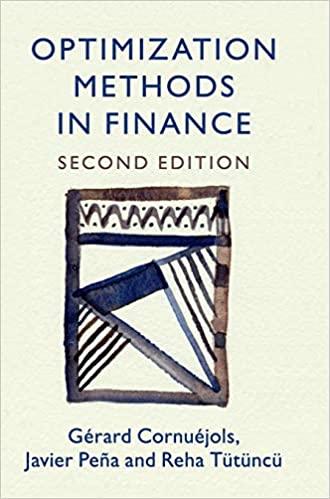Question
Simon Companys year-end balance sheets follow. At December 31 2017 2016 2015 Assets Cash $ 32,000 $ 34,900 $ 37,200 Accounts receivable, net 89,600 62,600
Simon Companys year-end balance sheets follow.
At December 31 2017 2016 2015
Assets Cash $ 32,000 $ 34,900 $ 37,200
Accounts receivable, net 89,600 62,600 58,400
Merchandise inventory 66,406 83,500 50,900
Prepaid expenses 11,305 10,389 4,376
Plant assets, net 395,689 293,611 239,124
Total assets $ 595,000 $ 485,000 $ 390,000
Liabilities and Equity Accounts payable $ 149,637 $ 81,965 $ 51,480
Long-term notes payable secured by mortgages on plant assets 112,979 112,666 84,466
Common stock, $10 par value 162,500 162,500 162,500
Retained earnings 169,884 127,869 91,554
Total liabilities and equity $ 595,000 $ 485,000 $ 390,000
The companys income statements for the years ended December 31, 2017 and 2016, follow.
For Year Ended December 31 2017 2016
Sales $ 773,500 $ 577,150
Cost of goods sold $ 471,835 $ 375,148
Other operating expenses 239,785 146,019
Interest expense 13,150 13,274
Income taxes 10,056 8,657
Total costs and expenses 734,826 543,098
Net income $ 38,674 $ 34,052
Earnings per share $ 2.38 $ 2.10
Additional information about the company follows. Common stock market price, December 31, 2017 $ 31.00 Common stock market price, December 31, 2016 29.00 Annual cash dividends per share in 2017 0.36 Annual cash dividends per share in 2016 0.18 To help evaluate the company's profitability, compute the following ratios for 2017 and 2016:
1. Return on common stockholders' equity.
2. Price-earnings ratio on December 31.
3. Dividend yield.
Step by Step Solution
There are 3 Steps involved in it
Step: 1

Get Instant Access to Expert-Tailored Solutions
See step-by-step solutions with expert insights and AI powered tools for academic success
Step: 2

Step: 3

Ace Your Homework with AI
Get the answers you need in no time with our AI-driven, step-by-step assistance
Get Started


